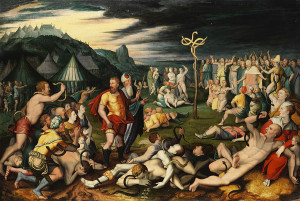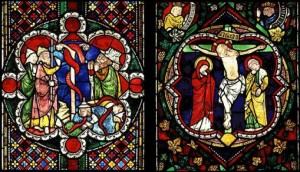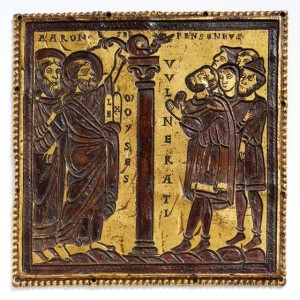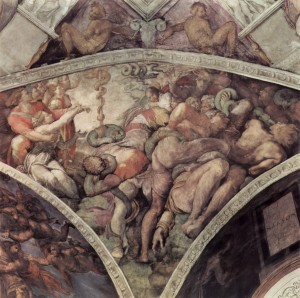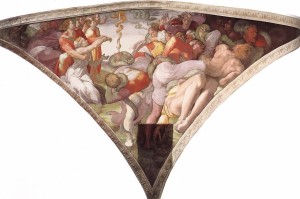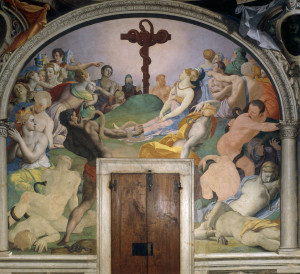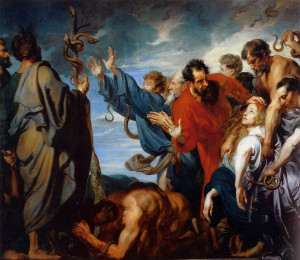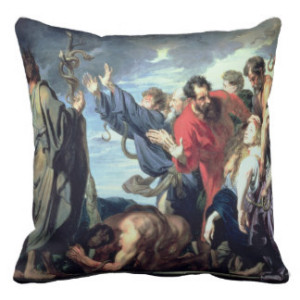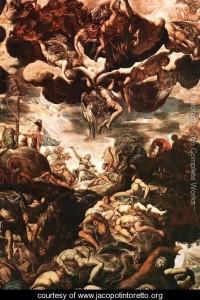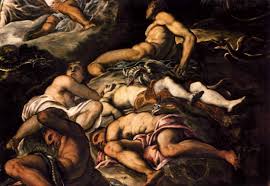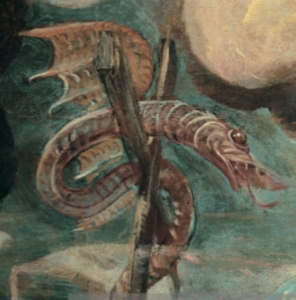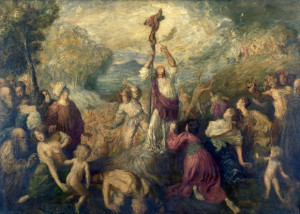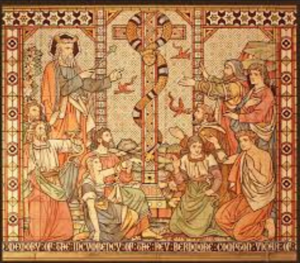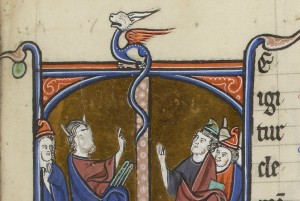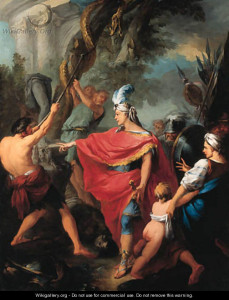Fiery Serpents are the subject of the reading from today’s Morning Prayer:
From Mount Hor they set out by the way to the Red Sea, to go around the land of Edom; and the people became impatient on the way. And the people spoke against God and against Moses, “Why have you brought us up out of Egypt to die in the wilderness? For there is no food and no water, and we loathe this worthless food.” Then the Lord sent fiery serpents among the people, and they bit the people, so that many people of Israel died. And the people came to Moses, and said, “We have sinned, for we have spoken against the Lord and against you; pray to the Lord, that he take away the serpents from us.” So Moses prayed for the people. And the Lord said to Moses, “Make a fiery serpent, and set it on a pole; and every one who is bitten, when he sees it, shall live.” So Moses made a bronze serpent, and set it on a pole; and if a serpent bit any man, he would look at the bronze serpent and live.
But in the Gospel of John we are told what this means:
And as Moses lifted up the serpent in the wilderness, even so must the Son of man be lifted up: That whosoever believeth in him should not perish, but have eternal life. For God so loved the world, that he gave his only begotten Son, that whosoever believeth in him should not perish, but have everlasting life. For God sent not his Son into the world to condemn the world; but that the world through him might be saved.
Cologne Cathedral
John Keble applies this to our condition:
The Israelites were batten by fiery serpents. Do you not see, and alas, do you not feel, that this is but a shadow of our natural condition? For what is all sin, but a serpent, a fiery serpent; a child and messenger of that Old Serpent, who tempted out forefathers, and would fain destroy us all? And sin is a fiery serpent, because of the fire of lust, which it causes to rage in us; and because of Hell-fire, by which it is already scorched, and which if not checked it will surely kindle upon us.
The Son of God, when He came to save sinners, was to be made in the likeness of sinful flesh. He was to go about in His lifetime. A man among other men; and in His death…he was to be numbered with the worst transgressors, bound and dragged along with the malefactors, and crucified between two thieves, as if He were the worst of the three. Thus, sinful flesh being the serpent that bites us, our Lord being made in the likeness of sinful flesh, was truly made in the lines of that serpent: in the likeness, I say, of sinful flesh ; not that he was Himself sinful flesh, God forbid ; but there was no touch of sin in His Human Nature, as there was no touch of poison in the serpent of brass ; but, an all beside sin, He was one of us : and being so, He vouchsafed to be lifted up, as was the serpent of brass, for our healing.
So it is with penitents, as concerning our Lord lifted up, as on this day, among us. However deep and grievous a person’s old sins may have been, however sad and fearful his relapses, there is virtue in Jesus Christ crucified to heal him entirely, if he look up with all his heart.
Manuscript Liège
Medieval Plaque
From the Sistine Ceiling
Bronzino
Van Dyke
Van Dyke on a Pillow
Tintoretto
Augustus John
William Dyce (note flying serpents)
Mormon Nehushtan by Alma Brockerman Wright
___________________________________________________________
Nehushtan
But the brazen serpent became a trap for the Israelites.
In the third year of King Hoshea son of Elah of Israel, Hezekiah son of King Ahaz of Judah began to reign. He was twenty-five years old when he began to reign; he reigned twenty-nine years in Jerusalem. His mother’s name was Abi daughter of Zechariah. He did what was right in the sight of the Lord just as his ancestor David had done. He removed the high places, broke down the pillars, and cut down the sacred pole. He broke in pieces the bronze serpent that Moses had made, for until those days the people of Israel had made offerings to it; it was called Nehushtan.
